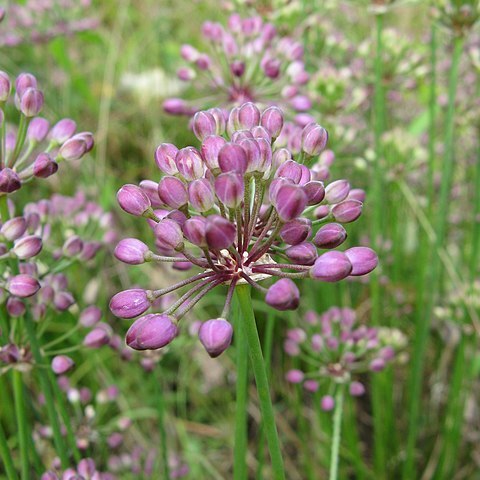An onion family plant. It is a bulb plant. The bulbs are usually single but occasionally in pairs. They are oval and 1-2 cm across. The outer covering is white or black brown. The leaves are linear. They are 2-4 mm wide and 3 angled. The scape is 25-40 cm long. It is covered with leaf sheaths for 1/4 of their length. The flower head has many loose flowers.

